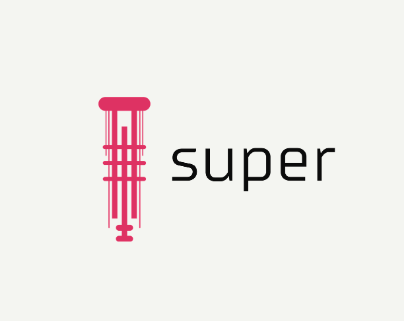Insider Brief
- Cinfo and Kipu Quantum and R are using quantum computing to improve the Galician operator’s optical fiber backbone network.
- The quantum algorithm identifies the most sensitive nodes, the ones that could have the greatest impact on the service in the event of a disconnection or breakdown.
- The information makes it possible to focus on those points detected with current quantum technology and anticipate counteractions.
PRESS RELEASE — The project, promoted by Cinfo and Kipu Quantum on the R infrastructure, applies the computing capacity offered today by quantum computing to the Galician operator’s optical fiber backbone network, examining its robustness and resilience to potential outages and/or critical situations.
The newly designed quantum algorithm identifies the most sensitive nodes, the ones that could have the greatest impact on the service in the event of a disconnection or breakdown. This relevant information makes it possible to focus on those points detected with current quantum technology and anticipate counteractions, achieving a maximum index of network availability and service excellence.
Cinfo, which has prepared the network model adapted to the capabilities of accessible quantum computers, has been supported by Kipu Quantum, which was in charge of preparing the model of the quantum algorithm to analyze the R backbone network.

Norberto Ojinaga, Director of Technology Solutions at R and the MASMOVIL Group, believes that “the considered use case is a realistic instance that allows a significant improvement in the quality and guarantee of the service that, as a telecommunications operator, we want to offer our customers”.
In addition, Isidro Fernández de la Calle, Director of Business at R and MASMOVIL Group, explains that “we manifest our strong engagement to provide our customers with a robust and resilient network in case of most adverse circumstances; therefore, we cannot neglect the advances quantum computing offers now to simulate and prepare our environments to be managed with a maximal guarantee.”
Analysis in two phases: quantum annealers and neutral atoms
Unlike classical computing, and thanks to the large number of qubits of neutral-atom quantum computers (256 today and about 1,000 expected in about a year), the piloted quantum algorithm consumes the same time regardless of the number of network nodes.
In the first phase of the R-Cinfo-Kipu project, an analysis has been carried out for each node with currently available quantum computers. Specifically, an initial classification of the network topology has been performed with a quantum annealer on 180 of the 5,627 qubits available in the quantum computers of the D-Wave company, allowing a sensible network segmentation.
In the second phase, the one related to the examination of sublattices, QuEra’s quantum computer based on neutral-atom technology was used with 20 qubits for the solution of the main lattice structure and 46 qubits for the combined structure of sublattices.
This pioneering hybrid solution architecture employing various quantum computing technologies has been made possible due to the commercial access offered by providers through cloud services. QuEra platform access is enabled by AWS Braket service, while D-Wave provides its own services. Cloud quantum computing capabilities made these combined solutions possible by extracting the best from each of them.
The CEO of Cinfo, Antonio Rodríguez del Corral, points out that “at Cinfo, we have accepted the challenge of creating valuable use cases in quantum computing for industry. To this end, we are developing a team of professionals – graduates in Physics from the University of Santiago de Compostela – and selecting technology partners that will introduce us to the design of quantum algorithms and to the understanding of the different capabilities of existing quantum computers, such as Kipu Quantum”.
For Rodríguez del Corral, “technology companies are needed to identify business problems where quantum computing can help, because the customer does not have to know the details of a complex field that evolves at great speed. We try to find unsolved business problems in large companies and see whether quantum computing can provide better solutions. Once the challenge has been identified, the most appropriate algorithm and quantum hardware will have to be chosen, which may change in time as quantum computers develop.”
Regarding the analysis done of the R network, the CEO of Cinfo explains that “the optimization of network traffic is always a key issue and, in complex networks such as the R network, it may require quantum computing. We proposed it, confirmed the fit, and this project was born.”
On another note, Kipu Quantum’s Chief Visionary Officer, Enrique Solano, comments that “quantum computers with digital, analog, and digital-analog encoding will move closer to quantum advantage for industrial use cases this year. Projects such as the one developed with R and Cinfo are a step forward towards the practical use of quantum processors with hundreds of qubits. Kipu Quantum is proud to contribute to the leaders and pioneers of the Galician quantum pole in the use of quantum technologies.”
The CEO of Kipu Quantum, Daniel Volz, believes that “this project should lay the foundations for a long and fruitful collaboration with Cinfo, with the Galician industry and business community, as well as with the Spanish technological ecosystem in our joint path towards the usefulness of quantum computers in Europe”.
Both quantum hardware companies and algorithm vendors have embraced the challenge of achieving quantum advantage in the short term, possibly in a couple of years. The startup Kipu Quantum aims to achieve this as soon as possible with its application- and hardware-specific algorithms, which are adapted to existing hardware. In addition, Kipu Quantum has the highest compression – i.e. reduction of algorithms in quantum devices – with digital, analog, and digital-analog encoding in optimization, logistics, finance, and artificial intelligence, as well as in the design of chemical molecules and materials. In this way, the best solutions can be extracted from quantum processors with qubits encoded in trapped ions, neutral atoms, or superconducting circuits.
Points for improvement on a realistic case
The topology of an advanced fiber network infrastructure such as R’s requires a detailed study of the connectivity of its nodes and strategic points that facilitate an evaluation of its strength. For this reason, the one of R has become a use case for Cinfo. In this sense, by running algorithms or models through quantum computers, it is possible to detect points of improvement in the network and draw conclusions to act and solve.
As quantum computers become more powerful, a larger number of more complex variables can be incorporated into the algorithmic study. In this way, the path established by this Cinfo project, in collaboration with its expert partner Kipu Quantum, will go ahead and exploit the more than predictable quantum hardware enhancements. In fact, it is expected that by 2025 these supercomputers may already be able to process the algorithm for a complex network such as the backbone of R and the entire MASMOVIL Group; basically, as the infrastructure grows, it is optimized and perfected.
All this shows that the use of quantum computing for the analytical and complete resolution of common problems in the industry is imminent. This will allow us to discard current approaches based on brute force and experience, which are not always effective in anticipating all scenarios.
For more market insights, check out our latest quantum computing news here.


















